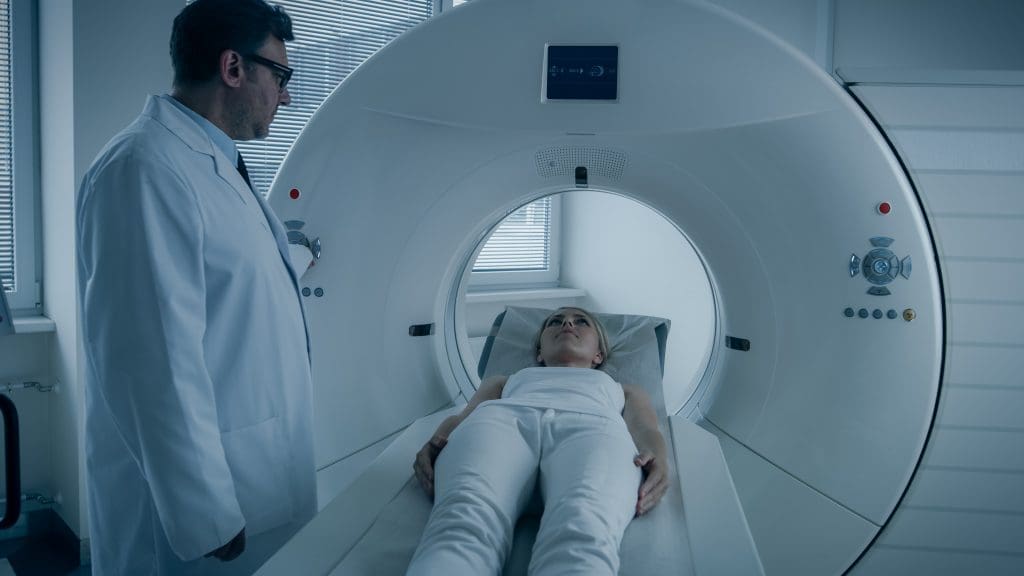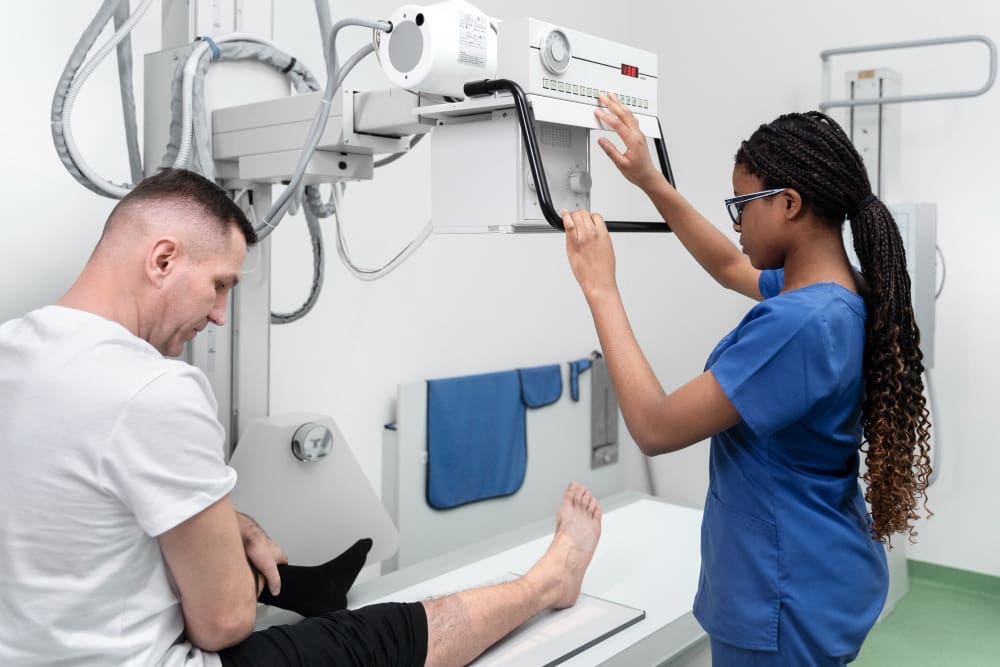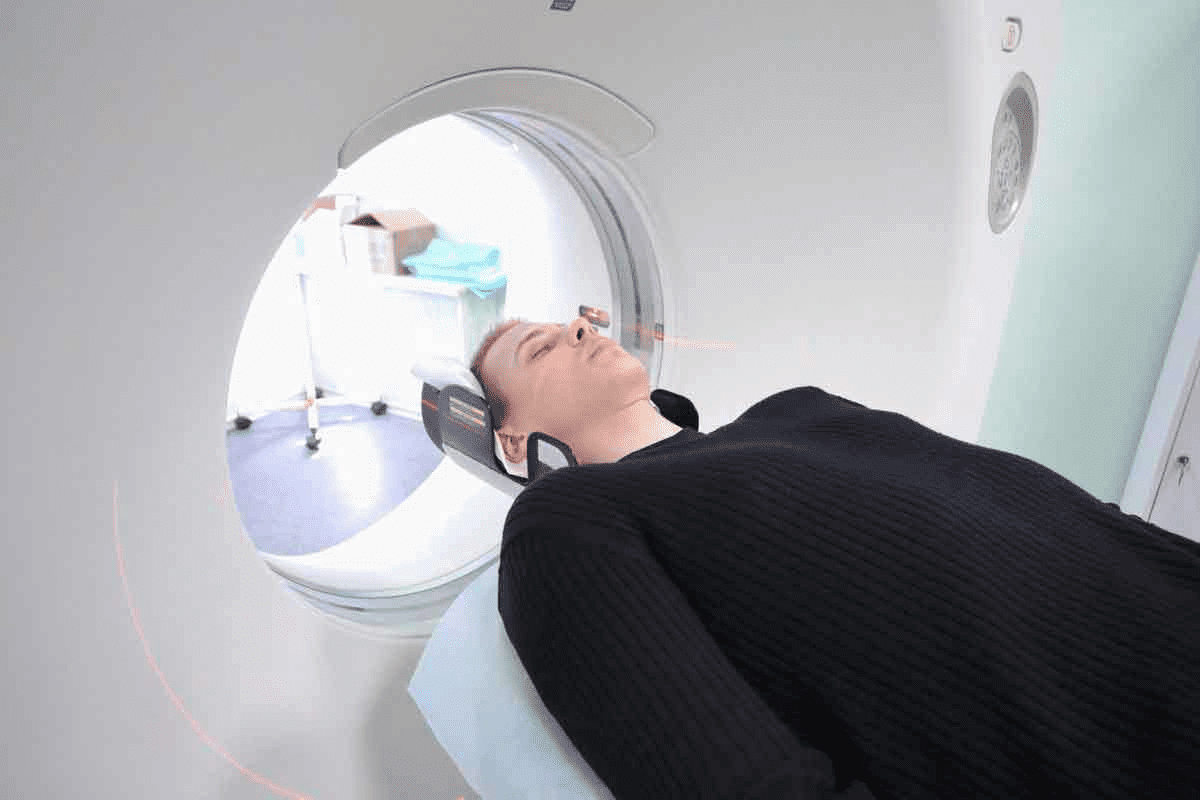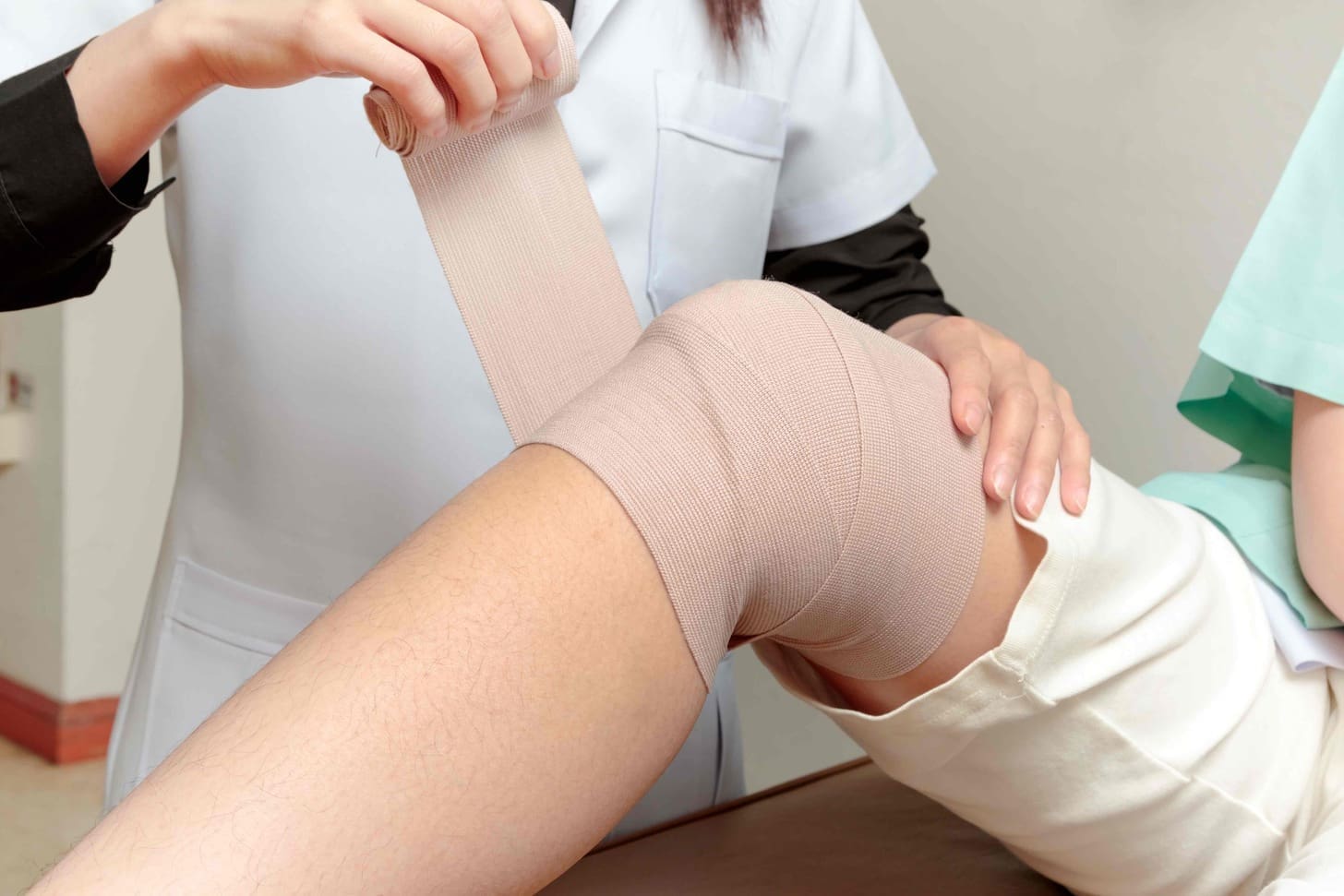Last Updated on November 27, 2025 by Bilal Hasdemir
Positron Emission Tomography (PET) is a tool that shows what’s happening inside the body. A PET scan is a detailed imaging test that helps find and manage different health issues. It works by detecting radiation from the body to create clear images. These images help understand how diseases spread.
Getting ready for a PET scan is key to getting the best results. Proper prep for a PET scan usually includes knowing what to expect, following specific diet rules, and taking certain steps so the images come out accurate. By preparing correctly, you help your get clearer results and ensure the test goes as smoothly as possible.
Key Takeaways
- Understand the basics of Positron Emission Tomography (PET)
- Learn the importance of preparation for a PET scan
- Discover the role of PET scans in medical diagnosis
- Find out how to prepare for a PET scan
- Know what to expect during the PET scan procedure
Understanding PET Scan Technology

PET scans use radioactive tracers to see how the body works. They are key in finding and tracking diseases like cancer and heart issues. This tech is a big help in modern medicine.
What is a PET Scan?
A PET scan is a test that shows how the body uses energy. It uses a special drug that lights up when it finds certain areas. This helps see what’s going on inside.
PET scans are great for spotting problems early. They show how active different parts of the body are.
How PET Scans Differ from CT Scans and MRIs
PET scans are different from CT scans and MRIs. CT scans use X-rays to see the body’s structure. MRIs use magnetic fields to see soft tissues. But PET scans look at how active the body’s cells are.
| Imaging Test | Primary Use | Technology Used |
| PET Scan | Metabolic activity | Radioactive tracer |
| CT Scan | Anatomical imaging | X-rays |
| MRI | Soft tissue imaging | Magnetic fields and radio waves |
The Science Behind Positron Emission Tomography
PET scans work by finding gamma rays from radioactive tracers. The most used tracer is Fluorodeoxyglucose (FDG). It’s a special sugar that lights up when it finds active cells.
FDG lights up where cells are growing fast, like in cancer. This helps see where problems are in the body. It’s a big help in finding and tracking diseases.
Before Scheduling Your PET Scan
Knowing what you need before a PET scan can really help. Being ready makes the process smoother.
and Authorization Requirements
First, learn about your insurance and what’s needed for a PET scan. Most plans need you to get approval before the scan. Check with your insurance to see what they require.
Pre-authorization means your sends a request to your insurance. This explains why you need the scan. You can help by:
- Reaching out to your insurance to learn about their process.
- Making sure your has all the needed documents.
- Following up with your insurance to confirm they got the request.
| Requirement | Description | Action Required |
| Pre-authorization | company approval before the PET scan | Contact insurance company, ensure provider submits request |
| Coverage Details | Understanding what is covered under your plan | Review insurance policy, ask about coverage |
| Out-of-Pocket | Understanding any not covered by insurance | Discuss with insurance company and healthcare provider |
Discussing Medical History with Your
Talk to your about your medical history before the PET scan. Tell them about any allergies or bad reactions to medicines. Your needs this info to keep you safe during the scan.
Be ready to share:
- Any bad reactions to contrast agents or medicines.
- Your current medicines and how much you take.
- Any health issues you have.
Choosing the Right Imaging Center
Picking the right place for your PET scan is key for good results and a good experience. Look at:
- The center’s accreditation and reputation.
- The experience of the techs and .
- The type of PET scan technology they have.
Choosing wisely helps make sure your PET scan goes well.
Essential PET Scan Preparation Guidelines
To get accurate results, patients must follow certain steps before a PET scan. Proper preparation is vital for clear images. These images help diagnose and treat conditions well.
Dietary Restrictions Before the Procedure
Patients need to eat a low-carb diet for 24 hours before the scan. This diet ensures clear and accurate images. It’s important to avoid sugary foods and drinks during this time.
- Avoid sugary foods and beverages
- Limit carbohydrate intake
- Focus on protein-rich foods and vegetables
Fasting Requirements and Timing
Patients must fast for 4-6 hours before the PET scan. This fasting is key for accurate results.
Key fasting guidelines:
- Stop eating and drinking (except water) 4-6 hours before the scan
- Avoid consuming coffee and other caffeinated beverages during the fasting period
Hydration Guidelines
Drinking water is important before a PET scan. It helps the radiotracer spread evenly in the body.
Hydration tips:
- Drink plenty of water before the scan
- Avoid caffeinated beverages that can act as diuretics
Physical Activity Limitations
Strenuous physical activity should be avoided before a PET scan. It can affect the radiotracer’s distribution. Moderate activity is okay, but check with your first.
By following these guidelines, patients can help ensure their scan is accurate and reliable.
Medications to Avoid Before a PET Scan
Certain medications can change how a PET scan works. It’s important to know how your current meds might affect the scan to get accurate results and a smooth process.
Common Medications That Affect Results
Some meds can change where the radiotracer goes in PET scans. This can lead to wrong results. For example, some diabetes meds can change blood sugar levels. It’s key to talk to your healthcare provider about your diabetes plan before the scan.
“The American Diabetes Association says to talk to your healthcare team about your meds before a PET scan,” they stress the need for personalized care.
Managing Diabetes Medications
For diabetics, managing meds before a PET scan is key. Metformin, a common type 2 diabetes med, can mess with PET scan results by changing where the radiotracer goes. Your might tell you to stop or change your meds to make sure the scan is right.
- Review your diabetes meds with your healthcare provider.
- Follow their advice on changing your dosage or stopping it.
- Keep an eye on your blood sugar levels as they tell you to.
Discussing Your Medication List with Healthcare Providers
Before your PET scan, talk to your healthcare providers about all your meds. This includes prescription drugs, over-the-counter meds, and supplements. This detailed review helps find any meds that might mess with the scan and make sure it works well.
“A thorough medication review is a critical step in preparing for a PET scan, ensuring that the results are accurate and reliable.”
By knowing which meds to avoid or adjust before a PET scan and talking openly with your healthcare team, you can make sure the scan goes well and gives useful info.
The Day Before Your PET Scan
Getting ready for a PET scan takes a few steps, and the day before is key. It’s important to prepare both physically and logistically. This ensures you’re ready for the procedure.
Final Preparation Steps
The day before your PET scan is for finishing up any last-minute tasks. Make sure you’ve followed all dietary instructions from your . These are important for accurate scan results. Also, check your appointment details, like time, location, and any special instructions.
It’s wise to write down any questions or concerns for the scan day. This way, you won’t forget to ask them to the medical staff.
| Preparation Task | Action Required |
| Dietary Instructions | Follow the diet plan provided by your healthcare provider |
| Appointment Details | Review time, location, and specific instructions |
| Questions for Medical Staff | Write down any concerns or questions you have |
What to Pack for Your Appointment
Packing the right things for your PET scan can make things easier. Bring any needed documents, like insurance cards and medical records. Wear comfy clothes without metal parts.
“It’s always a good idea to wear loose, comfortable clothing and avoid bringing valuables to your appointment.” – Medical Imaging Expert
- cards and identification
- Previous medical records
- Comfortable clothing
- Any other items your healthcare provider asks for
Rest and Relaxation Recommendations
Rest is key the day before your PET scan. Avoid hard exercise for at least 24 hours before the scan. This helps the radiotracer spread right. Try relaxing activities like reading or listening to calm music.
Doing things that relax you can help. Reading, listening to music, or gentle stretches are good. Being well-rested makes the scan day easier.
Arriving for Your PET Scan Procedure
The day of your PET scan is here. Knowing what to expect can ease your nerves. It’s key to be ready for what comes next.
Check-in Process
First, you’ll start with the check-in. Try to arrive 15-30 minutes early. This lets you fill out paperwork and get ready.
What to Expect During Check-in:
- Presenting your identification and insurance information
- Completing any required paperwork or consent forms
- Receiving instructions on the procedure and any specific preparations needed
Changing into Hospital Attire
Next, you’ll change into hospital clothes. This keeps you safe and comfy during the scan.
Tips for Changing:
- Wear loose, comfortable clothing that is easy to change out of
- Remove any jewelry or metal objects that could interfere with the scan
- Follow the instructions provided by the hospital staff regarding any specific attire requirements
Initial Assessments
Before the scan, you’ll have initial assessments. These checks make sure you’re ready for the procedure.
Initial Assessment Procedures May Include:
| Procedure | Description | Purpose |
| Medical HistoryReview | A review of your medical history to identify any factors that could affect the scan | To ensure the scan is conducted safely and effectively |
| Vital Signs Check | A check of your vital signs, such as blood pressure and heart rate | To assess your current health status and readiness for the scan |
| Preparation Instructions | Instructions on how to prepare for the scan, including any necessary positioning or breathing techniques | To ensure you’re properly prepared for the scan and that it yields accurate results |
Knowing what to expect at the start of your PET scan helps. It makes the process smoother and more successful.
The PET Scan Injection Process
The PET scan starts with a special tracer injection into the patient’s blood. This tracer is key for the scan’s success. It builds up in areas with lots of chemical activity, like growing cancer cells.
Understanding the Radiotracer
A radiotracer is a substance that emits positron emission. The PET scanner uses this to make detailed images of the body’s inside. The most used radiotracer is Fluorodeoxyglucose (FDG), a glucose molecule with a radioactive tag.
FDG (Fluorodeoxyglucose) Administration
FDG is given through an intravenous injection. The amount and how it’s prepared are carefully managed. This ensures it’s well absorbed by the body.
Patients are then asked to wait quietly. This helps prevent muscle activity that could mess with the FDG’s spread.
The Uptake Period Explained
After the FDG injection, the body absorbs the radiotracer. This uptake period usually lasts 60 to 90 minutes. During this time, patients are told to stay very quiet and not move much.
Knowing about the PET scan injection process is key for patients. It helps them prepare well for their scan. By following the advice of healthcare professionals, patients can get the most accurate scan results.
What Happens During a PET Scan
Getting ready for a PET scan can make you feel less nervous. A PET scan is a high-tech tool used to check on health issues.
Positioning in the PET Scan Machine
During the PET scan procedure, you’ll lie on a table that slides into a doughnut-shaped machine. It’s important to stay calm and listen to the technologists’ instructions.
Duration of the Scanning Process
The scanning process usually takes about 30 minutes. But, you’ll spend more time at the imaging center because of preparation and waiting for the radiotracer.
Managing Claustrophobia During the Scan
If you have claustrophobia, the PET scan machine’s enclosed space might be tough. Tell your healthcare provider or the technologist about your claustrophobia. They can help with advice or mild sedation to keep you comfortable.
Communication with Technologists
Throughout the PET scan procedure, you’ll talk with the technologists running the machine. They’ll guide you and check if you’re okay.
| Aspect of PET Scan | Description | Tips for Patients |
| Positioning | Lying on a table that slides into the PET scan machine | Remain as steady as possible |
| Duration | Scanning process typically lasts about 30 minutes | Plan for extra time for preparation and uptake period |
| Claustrophobia | Potential discomfort due to enclosed space | Tell technologists; consider mild sedation if needed |
| Communication | Ongoing interaction with technologists | Follow instructions; ask questions if needed |
Knowing what happens in a PET scan can ease your worries. If you have questions or need more information, ask your healthcare provider or the imaging center staff.
Special Considerations for Different Patient Groups
When it comes to PET scans, special care is needed for different groups. This includes pregnant women and mobility-impaired individuals. It’s important to ensure the safety and comfort of all patients.
Preparation for Pediatric Patients
Pediatric patients need extra attention because of their age and size. They might need sedation to stay calm during the scan. The medical team will work closely with parents to make sure the child is comfortable and safe.
Guidelines for Pregnant or Nursing Women
For pregnant or nursing women, talking to their healthcare provider is key. They need to discuss the risks and benefits of a PET scan. The impact of radiotracers on the fetus or baby must be carefully thought about.
Adjustments for Elderly or Mobility-Impaired Patients
Elderly or mobility-impaired patients might need extra help. This could include physical support during the scan. Adjustments to the scanning process are also made to ensure their comfort and safety.
Considerations for Patients with Anxiety or Claustrophobia
Patients with anxiety or claustrophobia can benefit from relaxation techniques. In some cases, sedation might be needed. It’s important to talk openly with the medical team to manage these conditions well.
Post-PET Scan Precautions
After a PET scan, it’s important to take steps to protect yourself and others from radiation. Follow certain guidelines to reduce exposure and ensure a safe recovery.
Radiation Safety Guidelines
Keeping safe from radiation is key after a PET scan. The scan uses a radiotracer that emits radiation. This can affect people nearby. To stay safe, follow these tips:
- Avoid close contact with pregnant women and children for at least 24 hours.
- Maintain a safe distance from others, specially in crowded areas.
- Follow the imaging center’s specific instructions for radiation safety.
How Long You Remain Radioactive
The time you stay radioactive after a PET scan varies. It depends on the radiotracer used and your health. Most of the radiation is gone within a few hours.
| Radiotracer Type | Half-Life | Elimination Time |
| FDG (Fluorodeoxyglucose) | 110 minutes | Within 24 hours |
Interactions with Others After Your Scan
To protect others from radiation, limit close contact for a while. Drinking plenty of fluids helps get rid of the radiotracer faster.
“It’s vital to follow the post-PET scan instructions from your healthcare provider. This ensures your safety and the safety of those around you.” – Nuclear Medicine Specialist
Hydration and Elimination of Radiotracer
Drinking lots of water is key to getting rid of the radiotracer. Drink plenty of water and other fluids as advised by your healthcare provider. This helps flush out the radiotracer.
By following these precautions, you can reduce radiation exposure and recover safely. Always talk to your healthcare provider if you have any questions or concerns.
Understanding Your PET Scan Results
Your PET scan results give you important insights into your health. They help guide your treatment plan. It’s key to know what the results mean and how they’ll affect your care.
Typical Timeframe for Results
How long it takes to get PET scan results varies. Usually, it’s a few days. The exact time depends on the facility’s workload and the scan’s complexity.
Average Waiting Period
| Facility Type | Average Waiting Time |
| Hospital | 3-5 business days |
| Imaging Center | 2-4 business days |
How to Interpret PET Scan Images
Understanding PET scan images takes knowledge of the technology and the condition being diagnosed. PET scans use a radiotracer to show active areas in the body. This can highlight health issues.
Key aspects to consider when interpreting PET scan images include:
- The level of radiotracer uptake in different areas
- The size and shape of the structures being imaged
- Any abnormalities or irregularities
Follow-up Appointments with Your
After getting your PET scan results, seeing your is vital. They’ll explain the results, discuss their implications, and outline your treatment plan.
Be ready for your follow-up by:
- Writing down any questions or concerns you have
- Bringing any relevant medical records or test results
- Having a list of your current medications and dosages
By understanding your PET scan results and working with your healthcare provider, you can make informed decisions. This helps you move forward with confidence.
Conclusion
Getting ready for a PET scan is key to getting good results. Knowing what to do helps patients get accurate results and makes the scan go smoothly. This article covered the main steps to prepare, from what to eat to how to manage medicines.
A PET scan summary shows how important it is to follow certain rules. Patients need to stick to diet rules, fasting, and drinking enough water. They also need to talk about their medicines and health history with their .
In short, being well-prepared is vital for a PET scan to work well. By following the tips in this article, patients can help make the scan a success. This leads to better diagnosis and treatment, which is the main goal of a PET scan.
FAQ
Can I eat or drink before a PET scan?
What you can eat or drink before a PET scan depends on the type of scan and where you go. You might need to fast or follow a special diet for accurate results.
Are PET scans safe?
PET scans are usually safe when done right. But, like any test, there are risks, like radiation exposure and allergic reactions to the tracer.
How long do I remain radioactive after a PET scan?
How long you stay radioactive after a PET scan depends on the tracer used. Usually, the radioactivity goes away in a few hours.
What are the side effects of a PET scan?
Side effects from a PET scan are usually minor. You might feel a bit uncomfortable or anxious. But these feelings are short-lived.
What happens during a PET scan?
During a PET scan, you lie on a table that moves into the machine. The machine picks up the tracer’s radiation. This creates detailed images of your body’s inside.
How long does a PET scan take?
A PET scan’s length can vary. It can take from 30 minutes to several hours, depending on the scan and the place you go to.
What are the dietary restrictions before a PET scan?
The diet before a PET scan can change based on the scan type and where you go. You might need to skip sugary foods and drinks. This helps get the best results.
How do I prepare for a PET scan?
To get ready for a PET scan, you might need to fast or avoid certain medicines. You’ll also need to talk about your health history and any medicines you’re taking.
What is a PET scan and how does it work?
A PET scan is a test that shows how active your body’s cells are. It uses a special tracer that is injected into your body. This tracer is then picked up by cells and tissues.






